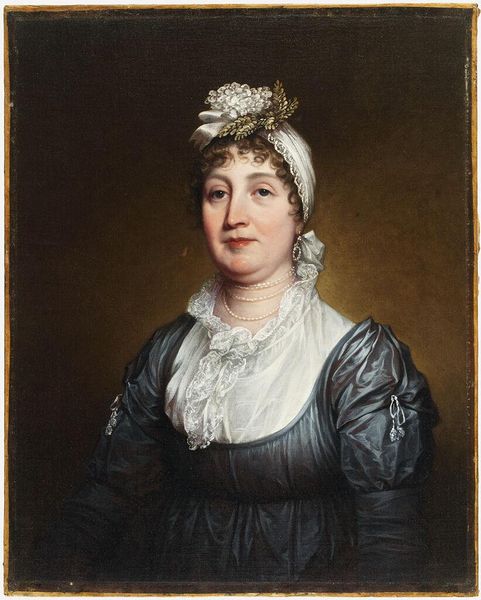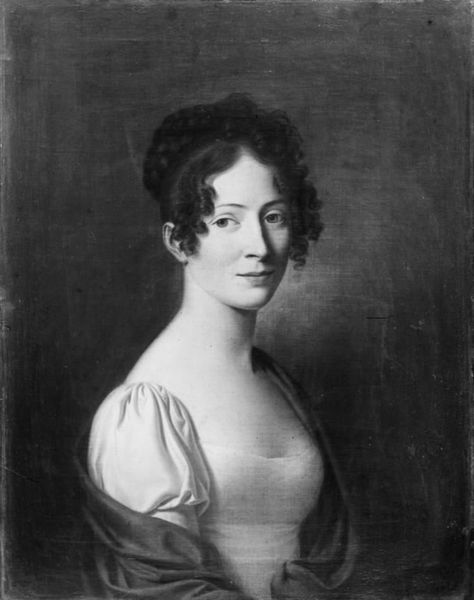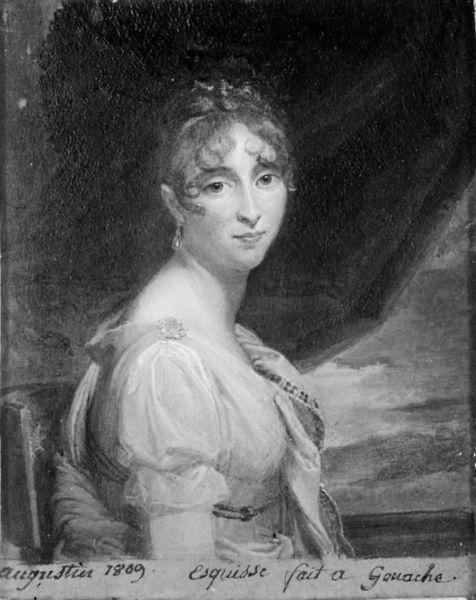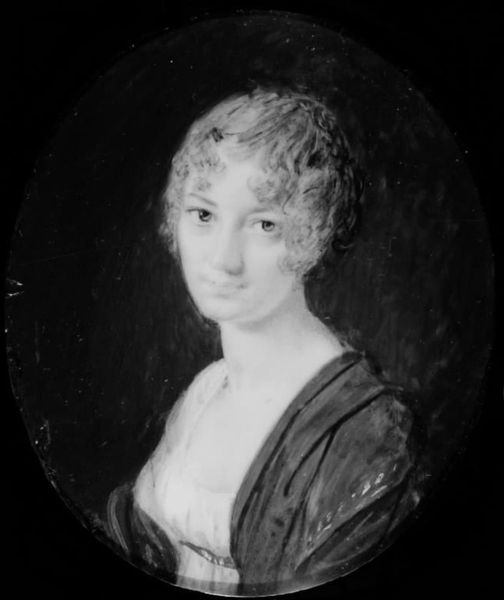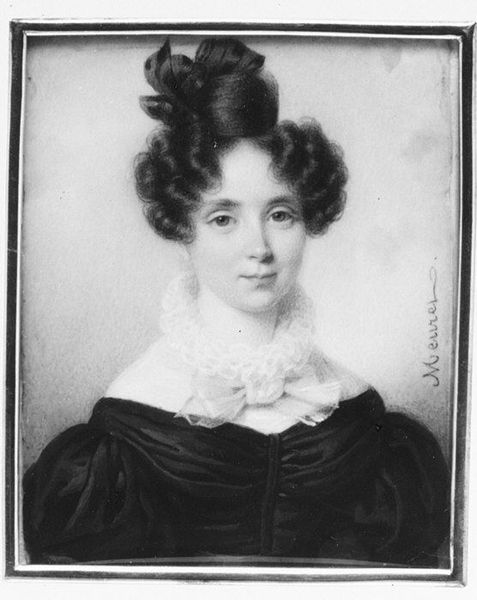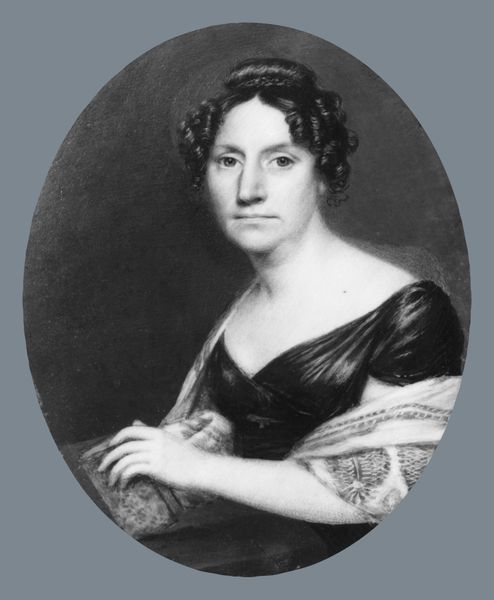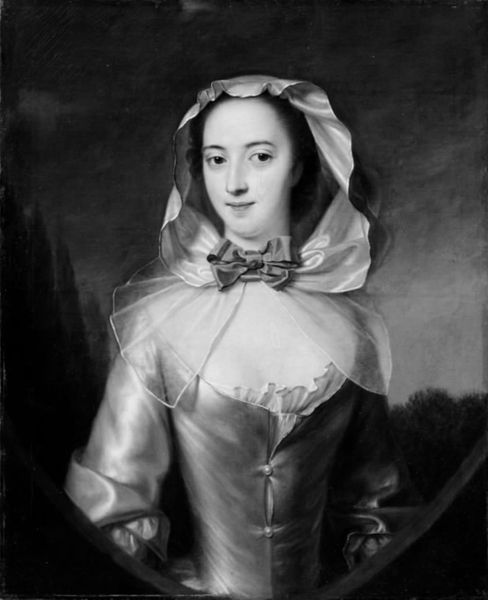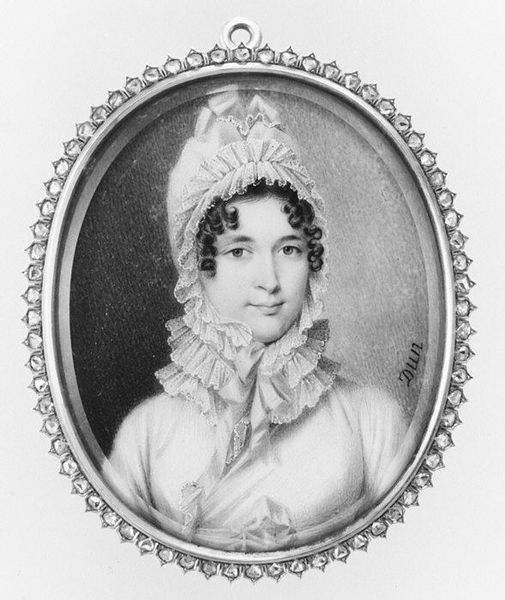
Appolone Smith, f. Lottrup, amtsprovst Troels Smiths anden hustru 1816
0:00
0:00
painting
#
portrait
#
neoclacissism
#
portrait image
#
portrait
#
painting
#
academic-art
#
monochrome
Dimensions: 26 cm (height) x 21 cm (width) (Netto)
Curator: This oval painting, crafted in 1816 by C.G. Kratzenstein Stub, offers us a glimpse into the life of Appolone Smith, the second wife of provost Troels Smith. Editor: There’s a stillness, a certain reserved quality to this portrait that I find immediately striking. The monochromatic palette amplifies that sense of calm, but maybe even a sense of melancholy. Curator: Stub was a portraitist who operated within the artistic circles that embraced neoclassicism and academic art of the time. His body of work reveals an understanding of representing status and belonging through his portraits. Consider Appolone's dress, simple yet elegant, suggesting a bourgeois identity. Editor: Right, because beyond just being a likeness, portraits are always deliberate statements about social identity, especially for women in this period. What choices did Appolone have in how she would be represented, and how did social expectations shape that representation? Curator: Her status as a provost's wife carried significant social weight, particularly in the church. The portrait reflects a desire to project respectability and virtue – qualities highly prized in women of her station during this era. The subdued palette emphasizes decorum rather than ostentatious display, resonating with the aesthetic preferences within bourgeois circles at the time. Editor: Absolutely, and thinking about who had access to art and representation then is vital. Did portraits such as this help cement power structures by immortalizing certain faces while others remained unseen? The act of portraiture itself could reinforce existing inequalities, by literally picturing who counts in society. Curator: Indeed. And Stub, through the choices of how he framed the scene, participates in that social ritual, conferring a degree of social permanence to the sitter and the structures that uphold it. Editor: So, when we examine this portrait today, we are seeing not only the representation of an individual but also a reflection of societal power dynamics during the 19th century, inviting us to consider who held the privilege of representation, and at what cost? Curator: Precisely, reminding us that the appreciation of art should always be complemented by critical investigation. Editor: Beautifully put, underscoring the point that art engagement should lead us to consider how we read visual codes and engage with notions of identity in images.
Comments
No comments
Be the first to comment and join the conversation on the ultimate creative platform.


